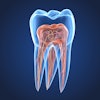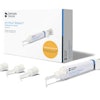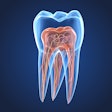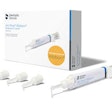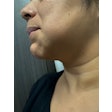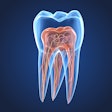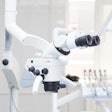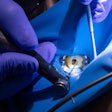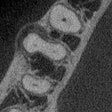 Dr. Deepika Ganne.
Dr. Deepika Ganne.
As a practicing endodontist, I often get cases where the teeth are suspected of fractures and the dentist asks for my opinion on how to restore them. Understanding the nature of cracked teeth is critical to help diagnose and treatment plan.
Cracks are seen principally in three varieties:
- Craze lines are cracks in the enamel and do not extend into the dentin. They occur naturally or are seen after trauma. These do not generally manifest with symptoms.
- Fractures extend deeper into the dentin and can be symptomatic or not. If not treated, especially in cases of occlusal trauma, fractures can progress into split roots.
- Split root fractures occur when fractures extend into the root, below the bone level. Endodontic treatments in these cases most often do not have a favorable prognosis.
Identifying techniques
Transillumination
A small light source, like a pen torch light, can be placed at the suspected tooth fracture site in a dark room. The light penetrates through the tooth structure up to the crack, leaving the part beyond the crack relatively dark. Craze lines can be seen very well with this technique.
Dyes
Dyes such as methylene blue or tincture of iodine applied to the dentinal walls can also be used to identify such fractures and craze lines.
Tooth Slooth/bite test
The tip of the Tooth Slooth plastic pyramid-shaped device is placed on the suspected fractured cusp. When the patient bites on this device with the opposing teeth, a sharp pain generally occurs on release.
Biting on a cotton roll, the tip of a cotton tip applicator, or a plastic saliva ejector has also been reported to produce similar results.
X-rays and cone-beam computed tomography (CBCT) imaging
Radiographs and CBCT imaging are essential in establishing a definitive diagnosis of a cracked tooth, especially a vertical root fracture.
Though most fractures are not visible on radiographs/CBCT until they are too advanced, the bone loss pattern (J-shaped) adjacent to the fracture line is of great diagnostic value.
Magnification
Magnification with loupes and microscopes is very helpful in identifying fractures as well, particularly in the access cavities, pulpal floors, and dentinal walls.
Generally, a diagnosis of cracked teeth can be difficult. A problematic tooth with no apparent reason for pulpitis pain or pulp necrosis (especially with minimal restorations/caries) is a prime suspect of a cracked tooth. The patient should be advised that the long-term prognosis in such cases is mostly unpredictable.
Dr. Deepika Ganne is with Austin Endodontics in Austin, TX, where she currently serves as a practicing endodontist and owner-doctor at two locations: Cedar Park and Westlake. She is an active member of several professional organizations, including the American Association of Endodontists, the ADA, the Texas Dental Association, the Capital Area Dental Society, and she is a founding member of the Austin Indian Dental Association.
The comments and observations expressed herein do not necessarily reflect the opinions of DrBicuspid.com, nor should they be construed as an endorsement or admonishment of any particular idea, vendor, or organization.

